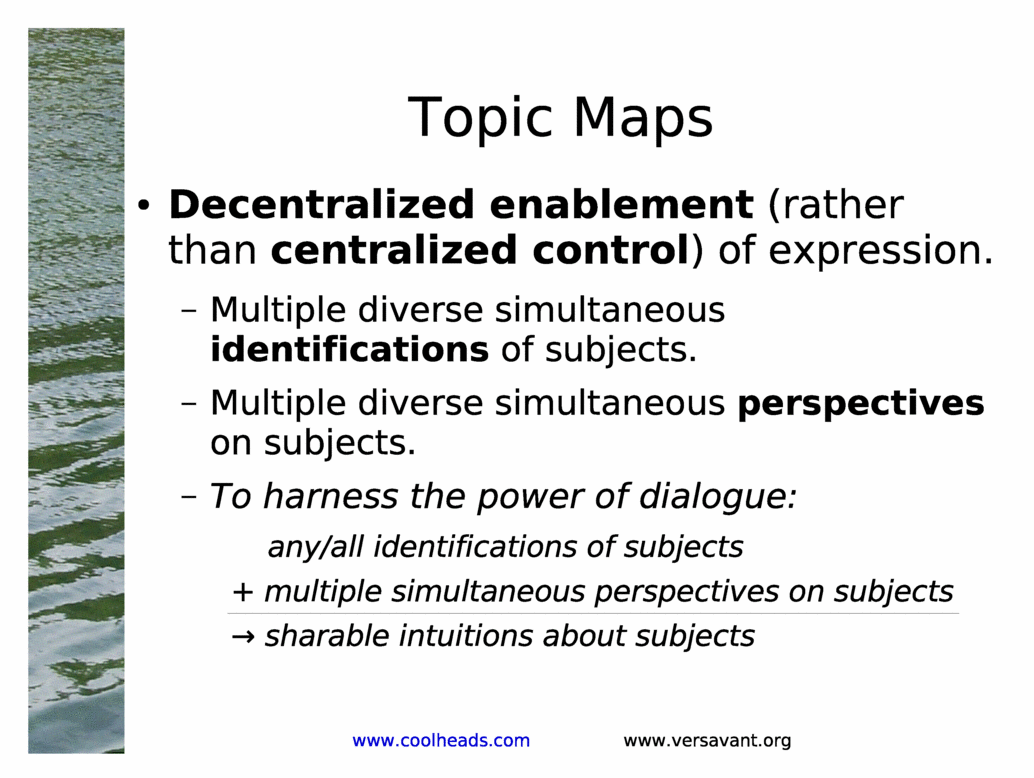
| Previous | SLIDE 12 | Next |
 | ||
Topic mapping is an important contribution to the enablement of collective intelligences. Unlike paradigms that first establish some single context within which all subjects must be uniformly identified, topic mapping assumes at the outset that information about any specific subject will come from independent sources, with each source reflecting its own perspective, its own jargon, and its own approach(es) to subject identification.
The novel thing about Topic Mapping, at least at the level of the Topic Maps Reference Model, is that it assumes that any given subject will be identified simultaneously, within different universes of discourse, and with no particular universe more valid, or more privileged, or necessarily more fundamental, than any other.
The Reference Model's deliberate avoidance of any standard perspective, or universe of discourse, or subject identification methodology, enables multiple different (self-describing!) perspectives on a given subject to cohabit the same subject proxy. When a user is confronted with such a subject proxy, a deeper, more intuitive level of understanding is possible. Plato wrote dialogs because he believed that it was easier to convey an understanding of something by revealing the tension between multiple individual perspectives.
I reminded the audience of Plato's "cave" allegory. I held up my hand in front of the projection screen, and asked that they imagine that the shadow of my hand is all that they can see. From the shadow alone, what can you tell? Well, you can see the outline of it, but you cannot know where it is, or what its shape is, or how large it is, even if you know where the screen and the projector are. Now, if we have two projectors in different places, one projecting blue light and one projecting red light, the hand will have two shadows, one surrounded with blue light and one surrounded with red. Suddenly, just by looking at the two shadows on the screen, we can know where the shadow-casting object is, how big it is, and even perhaps a hint as to its shape in three dimensions. We can apprehend these things only because the light is coming from multiple perspectives, instead of just one.